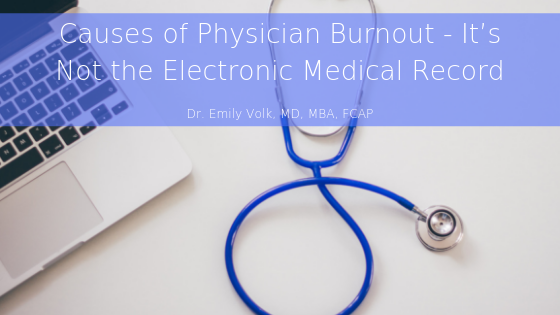Over recent years, there have been a lot of discussions centered around physician burnout. Physician burnout is exactly as it sounds, overworked physicians in our current healthcare system experiencing burnout from working long, hard hours day after day. It has been happening now in our hospitals for years and is a pretty heavily discussed topic, which makes it even more surprising that we have not been able to overcome this issue and protect our physicians and patients alike.
The first step to solving this problem is by figuring out where exactly the issue is stemming from. Answers to this question vary, but for the most part, there seems to be agreement on the following reasons: unnecessary bureaucratic responsibilities, long work hours, and a lack of respect for physicians time. When I speak with doctors at my hospital, the majority have a different answer that sums it all up: non-compliance.
Non-Compliance
One of the highest sources of frustration and physician burnout is non-compliance from their patients. This can be defined by a few different variables, but all circle back to the same problem. Patients who suffer from obesity, diabetes, addiction, and other chronic illnesses find themselves returning time and time again back to the hospital to be seen by a physician, most likely because they did not, or were unable to, follow the recommendations and instructions made by the doctor on their previous visit.
Each time one of these patients returns, physicians have to go through the same routine as their previous visit of asking questions, filling out paperwork, running any necessary tests, prescribing of needed medications, updating medical records, etc. Repeating these steps, again and again, is the primary reason our physicians are feeling so burnt out. It’s also taxing in terms of the resources the medical facility must use on each visit. In addition to this, it’s also hard on the patients pocket and income, as these medical tests and visits can be expensive depending on insurance payouts.
Social Support Structure & Resources
While this may seem like an accusation of patients, it is actually the direct opposite. Patients who do not comply by doctors orders are, more often than not, unable to do so because of the current world we live in. People all over the country lack the social support structure needed in order to comply. This relates directly to the availability and affordability of nutritional foods needed by diabetic and obese patients in order to overcome their diseases and work towards living a better, healthier life.
At the same time, it also relates to the lack of resources needed to support the millions of people all over the country currently suffering from addiction diseases. Our current social climate lacks the psychosocial resources needed to assist people with overcoming their food and chemical addiction problems. Our country is seriously lacking in rehabilitation facilities that are actually accessible, affordable and accepting of new addiction patients. This usually results in addicts ending up in some kind of healthcare facility looking for assistance in handling the pain that accompanies withdrawals, and of course, emergencies centered around overdoses.
There is also a huge concern involving our countries elderly patients. The lack of family support for the elderly outside of the acute care setting is contributing to physician burnout. Elderly patients who do not have family available to help them, and cannot afford to stay in a community for the elderly, often find themselves making these repeat visits to their physicians. They too are facing the challenge of not having a proper social structure in place to support them and their needs.
Consequences
Physician burnout does have consequences for both patients and physicians. This includes lower care quality, lower patient satisfaction, medical errors, malpractice risks, and a high turnover rate for physicians and staff. It can also lead to more serious problems centered around alcohol and drug abuse, and could even lead to physician suicide.
Prevention
Preventing physician burnout is much easier said than done. The problem stems deep in terms of our social support structure, and the subject has been deemed taboo to talk about, for admitting a problem translates to some people as admitting a form of weakness. In order to correct this problem, physicians need to be able to discuss it openly and honestly, and our country needs to begin taking steps to reshape our healthcare structure to help support and improve the lives of our physicians and patients.
